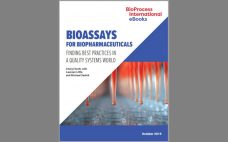Bioassays are complex and challenging experiments to run reliably with accurate and dependable results. Consistent performance requires a controlled environment and qualified reagents; skilled analysts who understand cell physiology, regulatory requirements, and the latest techniques; and assay protocols that are intelligently developed, characterized, and validated. Here, BPI’s senior technical editor discusses bioassay best practices with representatives of the Biopharmaceutical Emerging Best Practices Association (BEBPA) organization. Topics span quality by design, assay validation, cell banking, potency testing and host-cell protein monitoring,…
Author Archives: Michael Sadick
Assay Acceptance Criteria for Multiwell-Plate–Based Biological Potency Assays
For most biopharmaceuticals, potency is assessed in a bioassay by comparing dose–response curves of the test material and a reference standard. As with all analytical techniques, such assays require criteria by which their execution can be judged objectively to be valid, regardless of whether the desired or expected result is obtained for the test sample. PRODUCT FOCUS: BIOLOGICSPROCESSFOCUS: R&D, QCWHO SHOULD READ: PRODUCT AND PROCESS DEVELOPMENT, ANALYTICAL, QCKEYWORDS: IMMUNOASSAYS, POTENCY ASSAYS, PRODUCT RELEASE, REFERENCE STANDARDS, CONTROL SAMPLES, SAMPLE ACCEPTANCELEVEL: ADVANCED…

